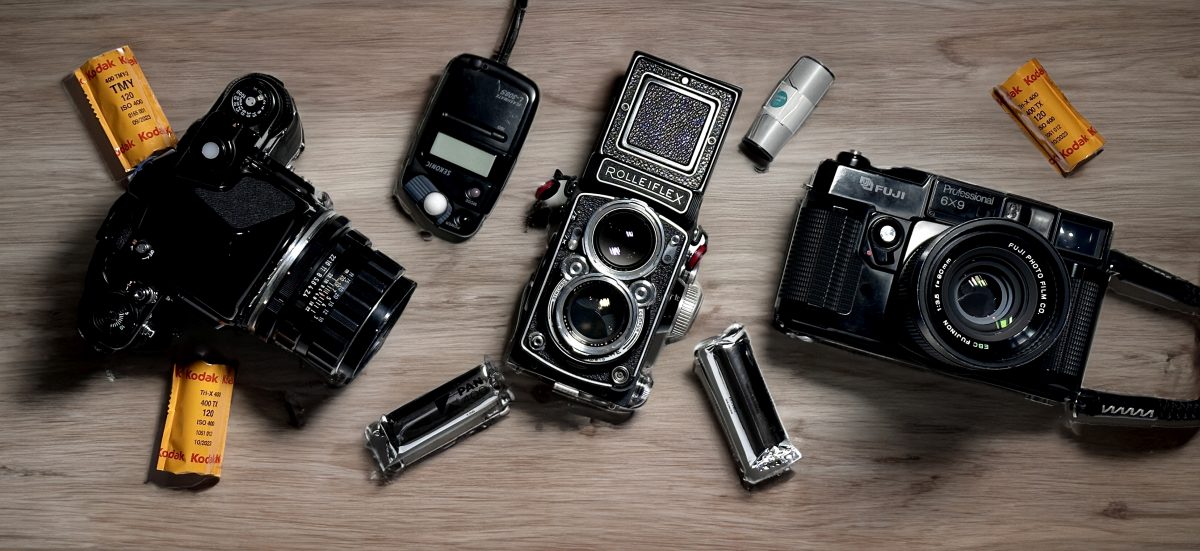
Those just starting in film photography usually work with 35mm. It’s cheap, easy to find, and is an excellent medium for photography with all styles of film cameras. Before long, the temptation to try something new and exciting sets in. While 35mm film cameras are a great starting point, it’s well worth moving into medium format. Medium format cameras capture stunning image resolution and are just as intuitive to use and work with as their small format cousins.
What’s more, medium format film cameras are probably more popular now than they’ve ever been. But before you make the leap from 35mm film to the richer image experience of medium format, there are a few things to learn. In this article, we aim to unravel the medium format mystery.
We’ll guide you through:
- Medium format terminology
- Understanding medium format
- Knowing what 120 films are best, and
- Discovering the different styles of medium format cameras.
- Plus the differences between Single Lens Reflex (SLR), Twin Lens Reflex (TLR), and Rangefinder medium format film cameras.
What Is Medium Format Film?
In the heady days of film photography, film frames were broken down into three categories. These included small format, medium format, and large format. These then broke down further into sub-categories of film depending on the camera’s frame size. Small format film has a standard frame size of 36x24mm and is most commonly referred to as 35mm film stock. It is also referred to as 135 film – but less so these days.
Before we get into medium format, let’s look at large-format films. Large format cameras typically have a frame size equal to or larger than 4×5 inches. However, large format film can include frame sizes such as 5×7″. 8×10″, and 11×14″. Kodak Portra 400 is still readily available in large format and includes 4×5″ and 8×10″. Given the larger size of this film, it doesn’t come in a roll like 35mm and 120. Instead, it is available in single sheets, with each sheet used as a single frame.
As for medium format, it is a film frame size that uses 120 roll film. All medium format film is 6cm wide and, depending on the frame of the camera, has varying lengths, including 6×4.5, 6×6, 6×7, 6×9, and even a panoramic 6×17. The length of the frame determines how many individual frames are available on a 120 roll of film. Typically, a 6×4.5cm roll of 120 medium format film fits 16 frames. The greater the length, the fewer frames fit on the roll.
The Best Film For Medium Format Film Cameras
Everyone who knows anything about cameras and photography knows that 35mm film is the mainstay of film photography. For those of us that grew up around film cameras, having a couple of rolls of Kodak 35mm sitting in the refrigerator was common. With the resurgence in film photography as a serious content medium, the range of 35mm film stock has grown. Fortunately, the same can be said for the medium format film stock range.
Medium format film photography is still just as important and popular as ever, with a growing range of film stock from big and small brands. Be sure to check out The Darkroom Film Index for a complete list of available 120 C-41, Slide, and Black and White films from brands including Kodak, Fujifilm, Lomography, Ilford, and Cinestill. Some of our favorites include the Kodak Tri-X 400, Fujifilm Velvia 50, and the Black and White Ilford Delta 3200.
If you’re looking for a range of medium format film stock to have a lot of fun with, there are a lot of boutique 120 rolls available. We highly recommend getting your hands on a handful of unique 120-roll films, including Lomography Kino 400, Lomography LomoChrome Purple, Bergger Pancro 400, and the Rollei Ortho 25 Plus.
Medium Format SLR Cameras
Medium format cameras are much larger than many popular 35mm film cameras. They take a much larger roll of film and feature a larger frame size. While they are much larger, they are still just as portable and versatile to use in the studio out in the field. The most popular style of medium format camera is the SLR – Single Lens Reflex. The ever-popular digital SLR is based on this clever design that hasn’t changed in decades.
An SLR medium format camera utilizes a mirror and a prism to transmit or bounce light through the lens and up to the camera viewfinder. How a medium format SLR is designed allows the photographer to see exactly what the lens is capturing without misalignment or distortion. As a result, what you see is what you get – including a proper view of the depth of field and composition framing.
On the flip side, medium format SLR cameras are a little loud and clunky due to the use of a larger internal mirror that flips out of the way to expose the film to light. When shooting at a much slower shutter speed(60th or below), the motion of the mirror can result in a camera shake, especially when shooting handheld.
A medium format SLR’s most common frame sizes are 6×4.5″ and 6×7″. A very popular choice for medium format SLRs is the Pentax 67 – named after the 6×7″ frame size. A prototype of the 67 appeared in 1965 with a commercial release as the Asahi Pentax 6×7 in Japan and Honeywell Pentax 6×7 in North America in 1969. While it retained a conventional 35mm SLR film camera aesthetic, it was a bit of a beast weighing in at 5.1lb. The Pentax relies on battery power to manage shutter timing, mirror movement, and the mechanical cloth shutter.
Today, The Pentax 67 can be found on most second-hand marketplaces and start from around $500 for a body-only version. Of course, the better the condition and the inclusion of quality glass can push the price up into the thousands.
The Darkroom’s Recommendations for SLR Cameras
Pentax 67 | Hasselblad 500cm | Mamiya 645 s1000 | Bronica SQ | Pentax 645
Medium Format TLR Cameras
Compared to the familiar-looking medium format SLRs, the Twin Lens Reflex (TLR) film cameras are boxy and more primitive-looking medium format film cameras. Thanks to their rectangle box appearance, TLRs are recognizable, along with the fixed twin lenses protruding from the front of the camera body. Thanks to their form, TLRs were considerably more compact than their SLR counterparts. However, their popularity has never diminished and is sought after today.
Unlike the SLR, the TLR did not feature a moving mirror that flipped out of the way to expose the film to the light. Instead, a medium format TLR used one of the objective lenses to take the photo, while the second provided the photographer with a view of the composition and possible frame. The viewfinder relies on a fixed mirror set at a 45-degree angle. The photographer holds the camera at waist height and looks down at the camera to see the viewfinder, focus, and capture the frame.
One of the most significant advantages of a medium format TLR camera is shooting discreetly. Since photographers hold the camera at waist height, they engage differently with a subject – especially when holding a larger SLR up to the eye. The downsides of TLR medium format cameras include the lack of prism resulting in backward images. Almost all TLRs feature a 6×6″ frame, and very few have the option for interchangeable lenses. It also takes some getting used to waist-level shooting as your perspective will be lower.
Popular choices for medium format TLR film cameras include Yashica MAT 124G and the Rolleiflex 2.8. Both are relatively compact, discreet, and quiet to operate. The Rolleiflex 2.8 was almost half the weight of the Pentax 67 at 2.8lb. Given the fixed lenses, lack of prism, and no moving mirror, the Rolleiflex was intuitive to operate yet delivered stunningly rich image quality. The Rolleiflex 2.8 is available in several versions and lens configurations. A Rolleiflex 2.8 starts at around $1,000 on the pre-owned market.
The Darkroom’s Recommendations for TLR Cameras
Rolleiflex 2.8 | Yashica MAT 124G | Mamiya C30 | Minolta Autocord | Rolleicord
Medium Format Rangefinders
The final style of medium format film camera is the rangefinder. Much like classic and modern 35mm rangefinder film and digital cameras, medium format RF cameras boast a see-through viewfinder that delivers a separate view to that seen by the lens. Most medium format rangefinder film cameras feature a lens mount to accommodate interchangeable lenses and lens adaptors. Rangefinder cameras come in a wide variety of frame sizes ranging from 6×4.5″ up to 6×9″.
As with most rangefinder cameras (film and digital), the medium format rangefinders are hugely popular amongst photojournalists and street photographers. The ability to frame up a composition through the viewfinder allows you to apply color filters when shooting with black and white film stock – especially if the camera has TTL metering. However, not seeing Through The Lens (TTL) makes it tricky to know if a flare or obstruction impacts the composition. As a result, rangefinder medium format cameras are not ideal for fine art and portrait shoots.
The Fujifilm GW 690 III Pro is popular for street photographers seeking a medium format rangefinder film camera. Another popular option is the Mamiya 7 – it is ideal for slower shutter speeds and handheld shooting thanks to its quiet operation. It weighed only 2 pounds for the body plus the weight of the chosen lens. A stand-out feature of the Mamiya 7 is the 6×7″ format and the delivery of stunning image quality and ultra-rich detail.
While second-hand copies of the Mamiya 7 are available, they are super pricey. Being a more recent model, a Mamiya 7 in excellent condition starts at around $2,500 for the body only. A Mamiya 7 with a lens like the popular 80mm f/4 sells for about $5,000 or more.
The Darkroom’s Recommendations for Rangefinders
Mamiya 7 | Mamiya 6 | FujiFilm GF670 | FujiFilm GW690III | FujiFIlm GA645
Don’t Be Intimidated By Medium Format
While it’s true that professional photographers typically use medium format film cameras, that doesn’t make these amazing analog cameras their sole domain. Any photographer with a thirst for analog photography should consider working with 35mm and 120 films. The jump in image quality and print resolution will astound you when shooting with a medium format film camera.
It’s also important to point out that while some rangefinder film cameras are expensive, plenty of affordable Single Lens Reflex (SLR) and Twin Lens Reflex (TLR) options are available at highly affordable prices. What’s more, the pre-owned medium format camera market shows no signs of drying up anytime soon.
Nor does the range of medium format 120 films have a shortage of exciting options to suit a range of shooting conditions and genres. Be sure to check out the Film Index over on The Darkroom site, and as always, you can rely on us to process, develop and print your medium format masterpieces every time.



 My Account
My Account

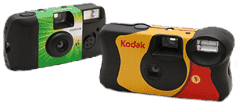
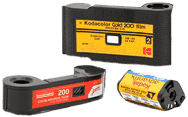
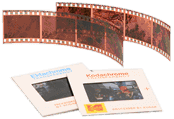
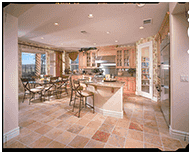
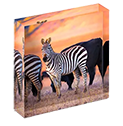
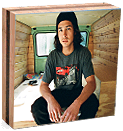
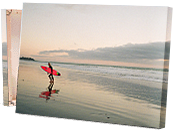
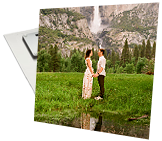
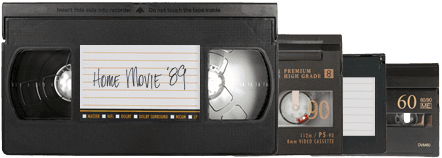
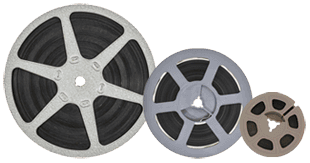
 Gift Cards
Gift Cards Film Index
Film Index FAQ
FAQ